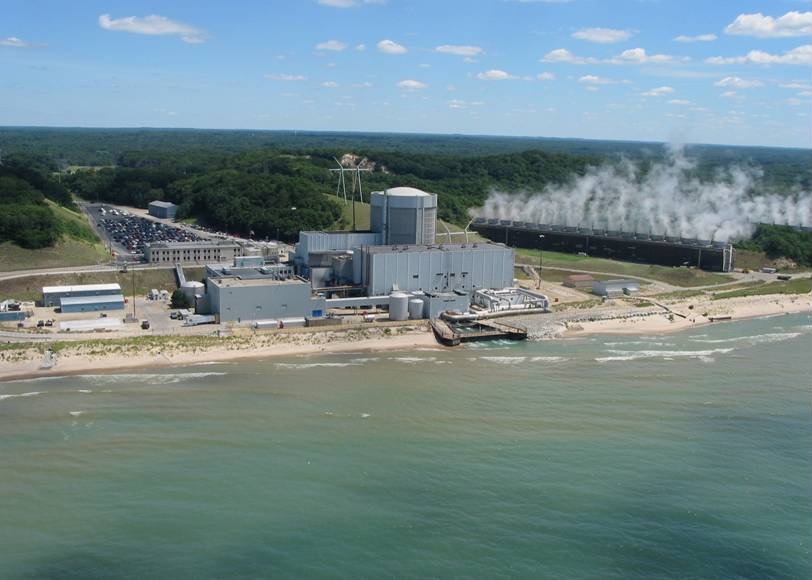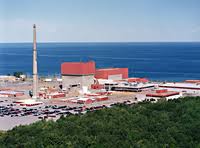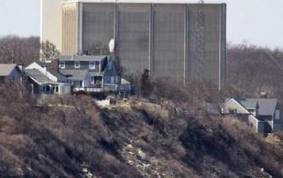
Over the last few months, there has been a bit of a selling spree of Entergy stock. But this sell-off isn’t coming from just anybody: these sales are by some of the corporation’s top executives. Between December and early April, five Entergy execs sold off large portions of stock they hold in their employer. On December 3, 2013, Entergy CEO Leo Denault sold more than half of his Entergy stock (55.7%, or 33,949 shares valued at $2,103,480). On February 20, the Chief Financial Officer, Andrew Marsh, sold 20.7% of his stock (2,808 shares valued at $181,902). On February 27, Senior Vice President for Federal Government, Regulatory, and Policy Affairs Kimberly Despeaux sold 20.8% of her stock (3,024 shares valued at $193,113). And most recently, on April 9, Chief Accounting Officer Alyson Mount sold 45.9% of her stock (4,929 shares valued at $347,495). Also, on December 16 and October 16, Senior VP of Human Resources and Chief Diversity Officer Donald Vinci twice sold more than 16% of his Entergy holdings.
There was nothing illegal about any of this, they are all above-board transactions properly reported to the Securities and Exchange Commission and covered in the investment press. But if the three people who know most about Entergy’s finances (the CEO, CFO and CAO) and the person in charge of the company’s government and regulatory affairs—which are central to the company’s economic future (see below)—don’t feel that Entergy stock is a better long-term investment, you have to wonder whether there’s some big news on the horizon.
We have posted a lot recently about economic troubles in the nuclear garden, and the industry’s gambit to rescue itself from financial collapse (see here and here, for instance). The two largest players in this are Exelon and Entergy, the #1 and #2 nuclear operators in the country. As Wall Street has become aware of the serious problems facing the nuclear energy business over the last year, Entergy and Exelon have increasingly been named among the riskiest investments among major energy companies. In terms of gross numbers, Exelon has the greatest exposure to the economic crisis facing “merchant” nuclear reactors – that is, those operating in deregulated energy markets, where power plants sell electricity on a wholesale market rather than as part of a utility company with ratepayers. All of Exelon’s 22 reactors operate in deregulated markets, and more than 25% of them have been listed as at risk of closure.
But in some ways, Entergy may be even more at risk than Exelon, If insiders voting with their portfolios is any indication. After all, no one is reporting on Exelon executives selling stock like their counterparts at Entergy. Entergy currently owns 11 reactors, six of which are part of the corporation’s merchant power division, Entergy Wholesale Commodities (EWC); five are part of Entergy’s utility business in Arkansas, Louisiana, and Mississippi. Nearly all of the merchant reactors face some imminent threat of closure—that is, all but Vermont Yankee, which Entergy already has announced will close in 2014.

Among the others, FitzPatrick (NY) and Pilgrim (MA) have been singled out by industry analysts as two of the most economically troubled plants. Palisades (MI) is only profitable now because of a sweetheart contract with the reactor’s former owner, but has a growing list of major maintenance issues, including an embrittled reactor vessel. Indian Point’s two reactors near New York City are Entergy’s only currently profitable merchant nuclear “assets,” but are still considered vulnerable to closure due to major public and political opposition and legal challenges to their relicensing. That means within the next couple years, literally every reactor and the entirety of Entergy’s merchant power division could go belly-up.
That has investor analysts concerned. Of the thirteen investment firms “following” Entergy’s stock, two recommend investors sell their Entergy stock, eight are “neutral,” five firms have downgraded Entergy in the last year,* and only one has “upgraded” their rating. So that’s reason enough to be worried if you own Entergy stock. Entergy has had other problems recently, not least of which is the failure of a major deal to sell off the company’s electricity transmission infrastructure in the south, rejected by Mississippi regulators.

But analysts are clear that the problems with Entergy’s merchant business are severe, possibly existential to that whole part of the company, and with major implications for the whole corporation. Last year, UBS Investment Research, one of the firms that has covered Entergy most closely (and rates Entergy negatively as an investment to “sell”), noted that Entergy may need to “restructure” its entire merchant nuclear business, including closing Vermont Yankee and FitzPatrick (and possibly Pilgrim), and noting that Indian Point could end up having to close due to legal and regulatory decisions. Such “early” closures of reactors, while better for the financial health of the company, could also entail liabilities for decommissioning trust funds that may not yet have built up enough value to meet NRC requirements.
One solution for a company like Entergy might be to sell off reactors or spin off that division of the company, but unfortunately for Entergy, those doors are closed: no other power company is going to buy Entergy’s reactors, all of which are either unprofitable or embroiled in regulatory disputes; and, most significantly, Entergy already tried and failed to spin off the merchant nuclear business, in a move ultimately blocked in 2010 by the New York Public Service Commission, which rightly saw the move as an effort to shield the parent corporation from liabilities that could bankrupt the new company and leave New York State holding the bag for contaminated reactor sites.

If Entergy’s merchant power business falls apart, that would leave Entergy with only five reactors—less than half its current fleet. That would significantly undercut its ability to distribute operating and managerial costs, and potentially raise costs for running the remaining reactors. Southern utility regulators may not be happy with having to raise electricity rates to make up for Entergy’s failed excursion into merchant power markets, which could apply financial pressure throughout the rest of the company.
The stakes are high for Entergy, as they are for Exelon, which explains why they are putting so much into trying to rewrite the rules to create new subsidies for old reactors and roll back renewable energy standards. It’s not because they really believe in nuclear. It’s just that they made bad business decisions years ago that locked them into nuclear and now put their corporations at risk. It may simply be too late for them to get out now. We just can’t afford to let them take our energy future away with them. It seems, at least, like Entergy executives might see the writing on the wall.
*NOTE: The linked summary of “Analyst Ratings for Entergy Corp (ETR)” incorrectly identifies one downgrade as an upgrade (1/16/2014 by Wells Fargo).
By Tim Judson.
Tim Judson is Acting Executive Director of Nuclear Information and Resource Service
April 15, 2014
Permalink: https://www.nirs.org/2014/04/15/why-are-entergy-execs-selling/
You can now support GreenWorld with your tax-deductible contribution on our new donation page here. We gratefully appreciate every donation of any size–your support is what makes our work possible.
Comments are welcome on all GreenWorld posts! Say your piece above. Start a discussion. Don’t be shy; this blog is for you.
If you like GreenWorld, you can help us reach more people. Just use the icons below to “like” our posts and to share them on the various social networking sites you use. And if you don’t like GreenWorld, please let us know that too. Send an e-mail with your comments/complaints/compliments to nirs@nirs.org. Thank you!
Note: If you’d like to receive GreenWorld via e-mail daily, send your name and e-mail address to nirs@nirs.org and we’ll send you an invitation. Note that the invitation will come from a GreenWorld@wordpress.com address and not a nirs.org address, so watch for it.




The sooner reactors close the better. With no solution for the radioactive wastes the reactors generate ( the only real product of n. energy) the less mess future generations will NOT have to be burdened with for the next 100,000 + years.
Recently someone commented that the n. waste was technically figured out. ” Technically”, you mean on paper? Just like n.power looks good on paper as well, yeah. N. power will be safe, clean and cheap and as soon as the Sun starts rising in the West.
I just took a look at Entergy’s stock chart. It looks healthy at the moment.
John,
They’re probably seeing a bump from their 1Q release yesterday. The consistent trend has been analysts downgrading Entergy and highlighting the long-term, structural problems with their business and their inability to execute the type of major plans necessary to reposition the company. A lot of utilities are seeing upticks right now because of the winter price spike, but again – that is not likely to be a long-term trend, and Entergy has been on a downward trajectory for some time now.
Tim Judson
Google on: entergy stock chart
At the top of the list an actual chart is shown that can be displayed at a number of different time scales. The bump you speak of shows on the 5-day scale. But look also at the 1-month, 6-month, and 1-year scales. More is going on than just the recent earnings report. Possibly the underlying winter energy price spike itself is the story. Or maybe the execs are manipulating things to give themselves more opportunity to sell. But at any rate, the stock price is not presently diving. It actually looks quite strong.
Tim is on a train to New York at the moment; will see if we can get him to comment later. But I’d say that the stock is doing well is a strong incentive to sell now, especially if the leadership thinks it isn’t going to continue going strong. If the execs thought the good times were going to continue, would they be unloading those quantities of stock? Our belief is that Entergy’s merchant nuclear business is in serious trouble and facing serious competition, and that is likely to become manifest later this year. Michael Mariotte
I don’t disagree with any of that…
Entergy Corporation
NYSE: ETR – Apr 16 4:01 PM ET
72.01+0.04 (0.06%)
Look at the 1 year chart. They are on an upward swing. Heading again towards their highest values in the last year. Looks like a wise time to sell based on history.
Yes, as we pointed out below–an excellent time to sell, especially if one is expecting bad news (good news for the rest of us) later this year…..
Entergy is the slumlord of nuclear, down with Entergy
What an interesting recent history they have.
You may have been too kind to the “slumlord”.
http://enformable.com/?s=entergy
It seems appropriate to remember a 24 year old fatal victim of theirs.
Quote: “On Easter Sunday, March 31st, 2013, 24-year-old Wade Walters was working at the only nuclear power plant in Arkansas owned by Entergy, as operators were removing the Main Turbine Generator Stator. The stator device, which weighs over 500 tons, fell and killed Wade, injured others, and caused a loss of off-site power.
This week, the family of Wade Walters filed a wrongful death lawsuit which states; “This is an action for wrongful death, ordinary negligence, negligent hiring, negligent training, negligent supervision, negligent retention, negligent hiring of an independent contractor, for declaratory judgment, and for punitive damages, stemming from multiple incidents of recklessness and negligence that lead to the collapse of an industrial crane on Easter Sunday, 2013, killing Wade Walters.””
http://enformable.com/2013/07/wrongful-death-suit-filed-in-wake-of-fatal-accident-at-arkansas-nuclear-one/
Rest in peace, Mr. Walters.
If you look deeper, you will find that many of the Entergy owned reactors are the same design as the one that failed in Fukishima. If I were in that position, I would not only sell my stock, but I would find another mode of employment. It is only a matter if time before the NRC clamps down with much more stringent safety and corresponding inspection requirements on reactors of that design. Meeting those safety requirements will likely break Entergy, and call into question why Entergy executives did not undertake safety changes when the reasons behind the disaster in Japan first came to light.
Entergy has been the slumlord of nuke for quite some time. Milking profits while letting the plants decay to dangerous levels. There is no way they will have money to decomission. But if the citizens really want nuke gone, they will end up paying for it one way or the other. Nuke steals from the future. It is a lie out of the gate. Here are 74 One liner lies of nuke.
http://nukeprofessional.blogspot.com/2014/02/classic-one-liner-lies-of-nuke.html
David,”Industry wont tolerate and csmoromipe” financial interests for safety? They just got caught red handed!Three fall guys get pushed off the ship and FENOC sails on. Maybe.The end result is that the senior managers in NRC and at FENOC have not yet been sanctioned for their involvement in:1) ignoring for years danger signs including having to daily change out air filters inside D-B containment because there was so much iron oxide in the air;2)ignoring photos of the lava-like flows of rust roiling off the vessel head (i.e. “the red photo”)taken in April 2000 and provided to NRC Region III before rushing the plant back on line;3)pulling a November 2001 NRC Order because 6 of the 7 B&W PWRs had evidence of borated coolant leaking from cracks in Control Rod Drive Mechanism penetration sleeves and only Davis-Besse had not inspected. Senior NRC management met with senior FENOC management (not indicted) and agreed to pull the inspection Order because early shutdown would adversely impact the company financially. etc. etc. etc. etc.The NRC management that pulled the November Order in the final hours before its issuance took a tremendous gamble with public safety to protect company profit margins.There is an obvious paper trail for employees at Davis-Besse but the chain of command from senior management was and is only verbal. Who really ordered the scaffolding for the inspection and cleaning the vessel head at Davis-Besse to be taken down in April 2000 before it was completed? These are the guys that got parrallel promotions or moved onto other power stations.Nothing has really changed except the window dressing for nuclear promotionalism.Paul, NIRS